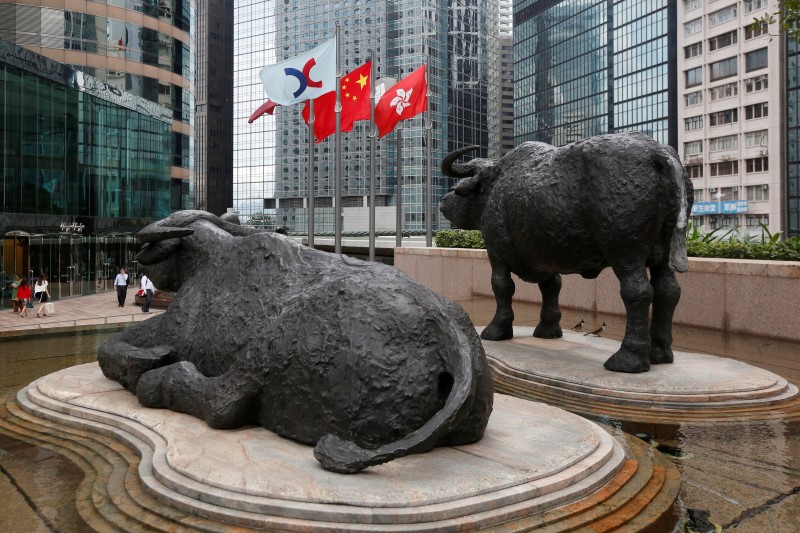Novo Nordisk, Eli Lilly slide after Trump comments on weight loss drug pricing
Investing.com -- Most Asian stocks rose on Thursday, buoyed by the prospect of increased stimulus in China following more rate cuts in the country, although hawkish signals from the Federal Reserve kept a lid on gains.
China cuts rates again as economic indicators disappoint
China’s Shanghai Shenzhen CSI 300 and Shanghai Composite indexes rose 0.7% and 0.3%, respectively, after the People’s Bank of China (PBOC) cut rates on its medium-term loans.
The move follows a cut in the bank’s short-term loan rates earlier this week, and potentially heralds a cut in the PBOC’s benchmark loan prime rates next week, unlocking more liquidity in the Chinese economy as the government looks to spruce up a slowing economic recovery.
The rate cuts largely offset a raft of weak Chinese economic indicators on Thursday, as data showed industrial production, retail sales, and fixed asset investment all grew at a slower-than-expected pace in May.
Despite a strong start to the year, the Chinese economy has lost momentum in recent months due to weakness in the manufacturing sector and reluctance in private capital to invest in the country.
But the rate cuts point to increased liquidity conditions in Asia’s largest economy, which could provide some near-term support for markets.
Other Asian markets rose tracking this notion, with Hong Kong’s Hang Seng index up 0.7% on its exposure to China. Australia’s ASX 200 also added 0.3% as data showed the country’s labor market remained robust.
Japan’s Nikkei 225 index rose 0.7%, while the broader TOPIX added 0.5%, with both bourses hitting new 33-year highs as stronger-than-expected exports and machinery orders data signaled some resilience in the economy.
Hawkish Fed outlook limits gains, weighs on sentiment
But other Asian markets retreated on Thursday, with South Korea’s KOSPI down 0.3%, while Philippine stocks led losses across Southeast Asia with a 0.6% drop.
Nifty 50 futures for the Nifty 50 pointed to a weak open for Indian stocks, although they hovered just below record highs.
U.S. stocks provided a weak lead-in to Asia after the Federal Reserve kept rates steady on Wednesday, but warned that interest rates could rise at least two more times this year as it moves against high inflation.
The prospect of rising U.S. interest rates bodes poorly for Asian stocks, given that it limits the amount of capital flowing into the region. Worsening economic conditions, as interest rates rise, are also expected to dent sentiment towards risk-driven assets.
